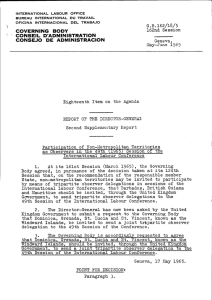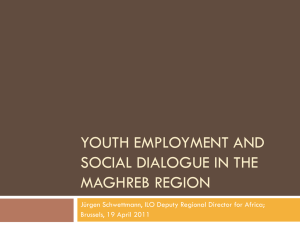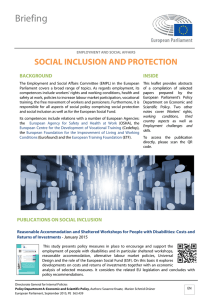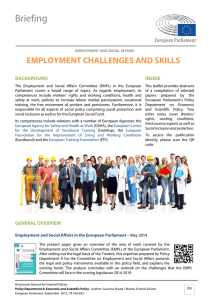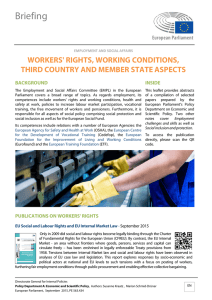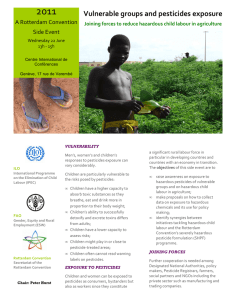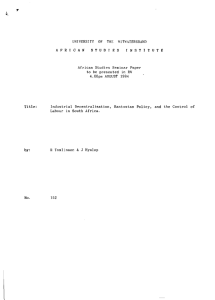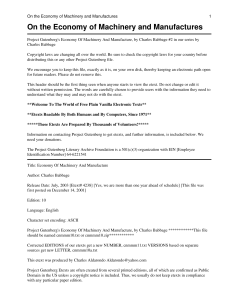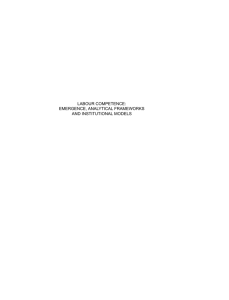Eurofarm domain Categories of labour force used in tables The farm
Anuncio
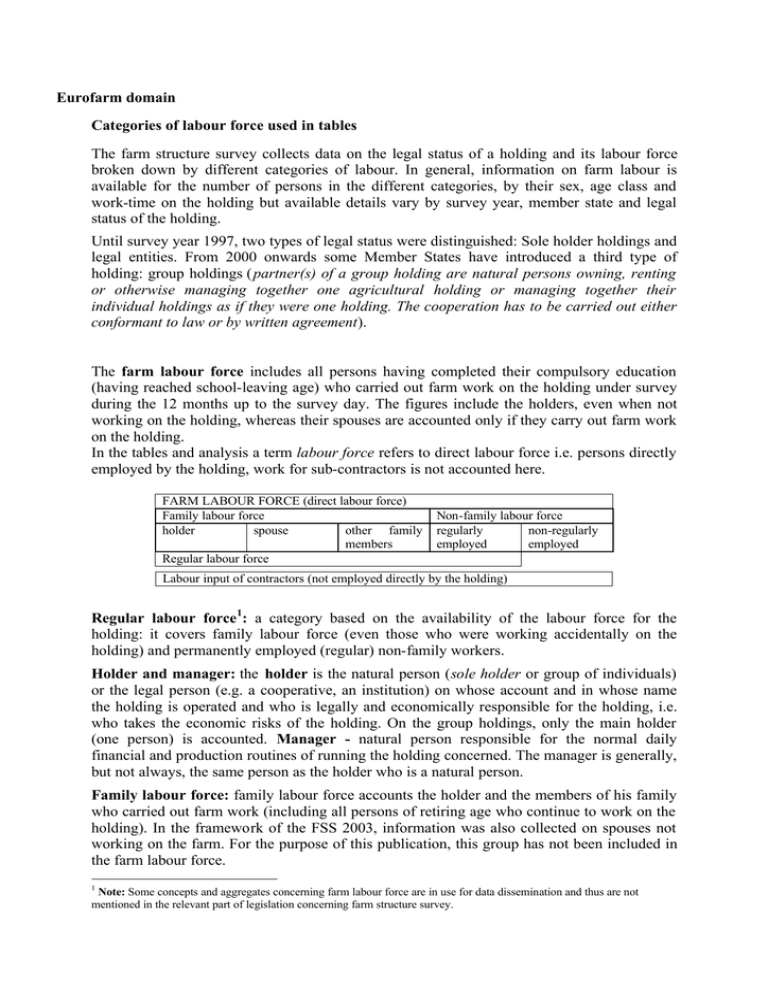
Eurofarm domain Categories of labour force used in tables The farm structure survey collects data on the legal status of a holding and its labour force broken down by different categories of labour. In general, information on farm labour is available for the number of persons in the different categories, by their sex, age class and work-time on the holding but available details vary by survey year, member state and legal status of the holding. Until survey year 1997, two types of legal status were distinguished: Sole holder holdings and legal entities. From 2000 onwards some Member States have introduced a third type of holding: group holdings (partner(s) of a group holding are natural persons owning, renting or otherwise managing together one agricultural holding or managing together their individual holdings as if they were one holding. The cooperation has to be carried out either conformant to law or by written agreement). The farm labour force includes all persons having completed their compulsory education (having reached school-leaving age) who carried out farm work on the holding under survey during the 12 months up to the survey day. The figures include the holders, even when not working on the holding, whereas their spouses are accounted only if they carry out farm work on the holding. In the tables and analysis a term labour force refers to direct labour force i.e. persons directly employed by the holding, work for sub-contractors is not accounted here. FARM LABOUR FORCE (direct labour force) Family labour force holder spouse other family members Regular labour force Non-family labour force regularly non-regularly employed employed Labour input of contractors (not employed directly by the holding) Regular labour force1: a category based on the availability of the labour force for the holding: it covers family labour force (even those who were working accidentally on the holding) and permanently employed (regular) non-family workers. Holder and manager: the holder is the natural person (sole holder or group of individuals) or the legal person (e.g. a cooperative, an institution) on whose account and in whose name the holding is operated and who is legally and economically responsible for the holding, i.e. who takes the economic risks of the holding. On the group holdings, only the main holder (one person) is accounted. Manager - natural person responsible for the normal daily financial and production routines of running the holding concerned. The manager is generally, but not always, the same person as the holder who is a natural person. Family labour force: family labour force accounts the holder and the members of his family who carried out farm work (including all persons of retiring age who continue to work on the holding). In the framework of the FSS 2003, information was also collected on spouses not working on the farm. For the purpose of this publication, this group has not been included in the farm labour force. 1 Note: Some concepts and aggregates concerning farm labour force are in use for data dissemination and thus are not mentioned in the relevant part of legislation concerning farm structure survey. Non family regular labour force: paid employees (employed by the holding) who carried out farm work every week during the 12 months preceding the survey (irrespective the length of the working week). Persons who worked only for part of that period are also considered as the regularly employed in case it was caused by: special conditions of production, holidays/sickness, commencement/cessation of employment (i.e. those who changed employment during a year), stoppage of agricultural activity of the holding due to accidental causes (flooding, fire etc.). Non family non regular labour force: short term seasonal workers (employed by the holding), e.g. labour engaged solely as fruit or vegetable pickers. In this case only the time worked is recorded (and thus, information available only in terms of annual work units). Taking into account a considerable degree of part-time work in agriculture and opportunities for part-time work in other sectors of the economy – information on employment in agriculture is given also in annual work units. An Annual Work Unit (AWU) is equivalent of the full-time employment. 1 AWU corresponds to the work performed by a person undertaking fulltime agricultural work on the holding over a 12 month period. The yearly working time of such worker is 1800 hours (225 working days of 8 hours per day), unless national provisions governing contracts of employment are specified. Countries where the yearly working time corresponding to 1 AWU follows national provisions: country DE EL ES FR CY LV LT LU AT PL PT RO NO hours 1760 2200 1824 1824 2080 1840 2032 2200 2000 2120 1920 1960 1845 days 220 275 228 228 260 230 254 275 250 265 240 245 230.6 As the volume of agricultural labour is being calculated on the basis of fulltime equivalent jobs, no one person can therefore represent more than one AWU. This constraint holds even if it is known that someone is working on agricultural activities for more than the number of hours defining full-time in the Member State concerned).
